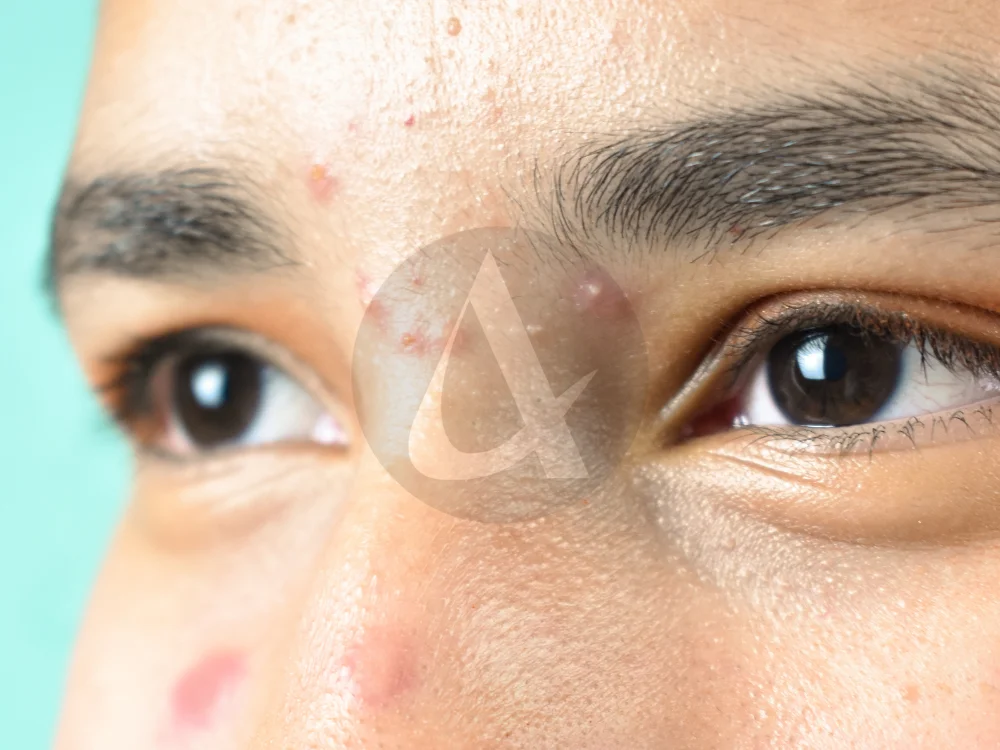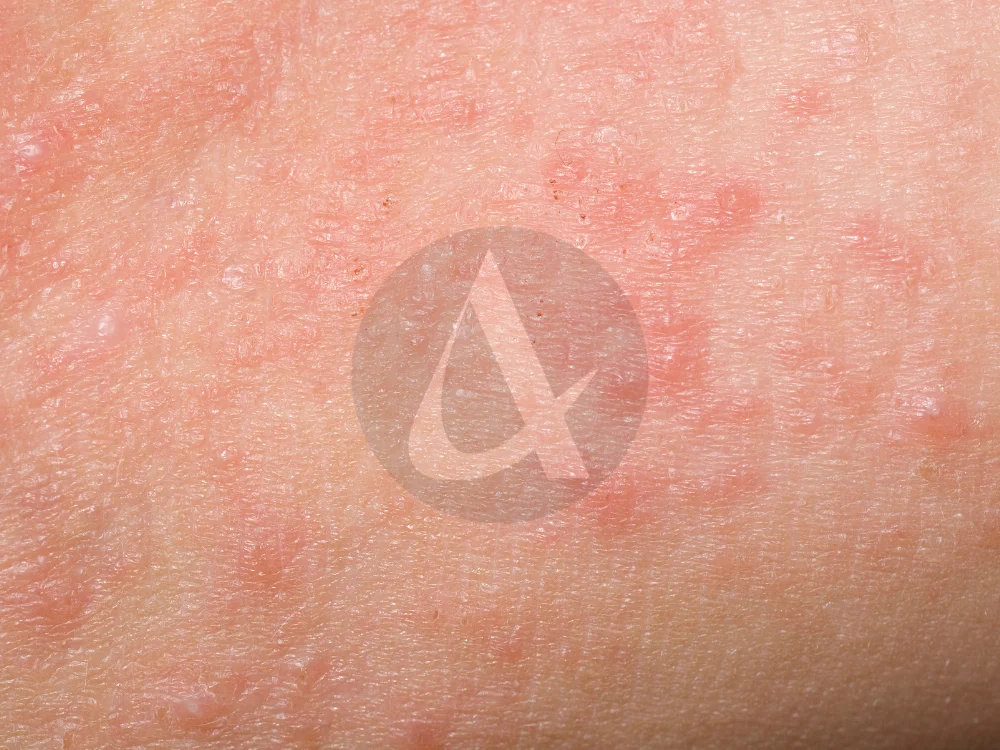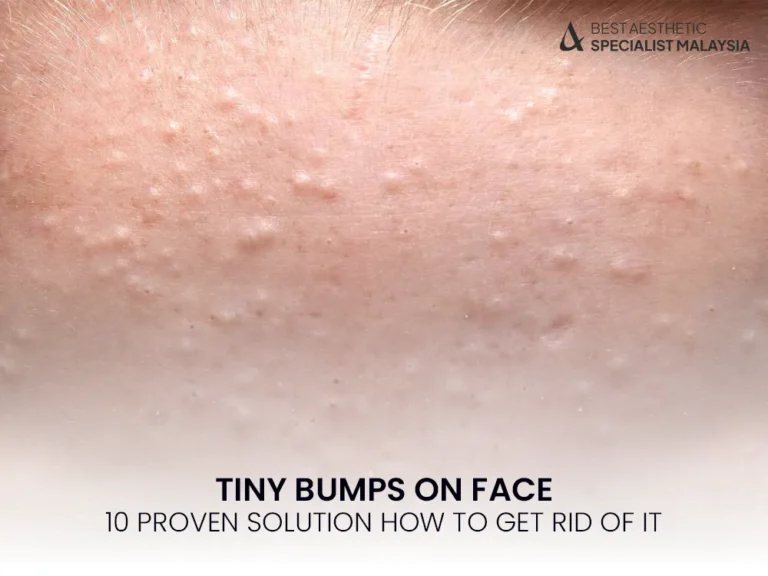Tiny bumps on face are small, raised spots that can show up anywhere on the skin. They can vary in size, texture, and severity depending on the cause. While these bumps are usually harmless, they can be a cosmetic concern for some people. It’s always a good idea to consult a dermatologist if you’re unsure about the cause.
Best Aesthetic Specialist offers expert, evidence-based care for tiny bumps on the face, combining medically proven diagnostics with personalized treatment plans. Led by qualified specialists and supported by advanced technology, the clinic provides trustworthy, results-driven solutions to restore smooth, healthy skin with confidence.
What Are Tiny Bumps on Face?
Tiny bumps on face are small, raised spots that can show up anywhere on the skin. They can vary in size, texture, and severity depending on the cause. While these bumps are usually harmless, they can be a cosmetic concern for some people. It’s always a good idea to consult a dermatologist if you’re unsure about the cause.
According to the American Academy of Dermatology (AAD) and regional dermatology reports in 2025, more than 40% of adults in Asia experience small facial bumps related to clogged pores, milia, or keratosis pilaris, with humidity and product buildup being key triggers (AAD, 2025; Dermatology Times, 2025).
Tiny Bumps on Face That Are Not Acne
Not every tiny bump on face is a pimple. Tiny bumps on the face that are not acne are often caused by conditions like milia, closed comedones, or keratosis pilaris. They look different from pimples because they don’t get inflamed, and treatment may include gentle exfoliation or dermatologist-recommended procedures.
Common Causes of Tiny Bumps on Face
1. Closed Comedones
Dead skin cells, oil, and dirt can accumulate in pores, leading to tiny bumps, often referred to as comedones (whiteheads and blackheads).
2. Keratosis Pilaris
This condition causes rough, small bumps, often on the cheeks or upper arms. It occurs when keratin builds up in hair follicles, giving the skin a sandpaper-like texture.
3. Milia (Trapped Keratin)
Milia are small, white bumps caused by trapped keratin under the skin, often seen in newborns but also common in adults.
4. Fungal Acne (Malassezia Folliculitis)
Fungal acne looks similar to regular acne but is caused by yeast overgrowth rather than bacteria. It often appears as itchy, uniform bumps.
5. Allergic Reactions or Irritation
Skin irritation from skincare products or environmental allergens can trigger small, itchy bumps on the face.
6. Other Skin Conditions
Less commonly, bumps can indicate eczema, rosacea, or other dermatological issues. Consulting a dermatologist is recommended if bumps persist or worsen.

How to Identify Tiny Bumps on Face Accurately
Skin Analysis
A professional dermatologist can diagnose the specific type of bumps through a physical examination.
Common Symptoms
- Texture: Raised and rough or smooth.
- Color: May appear white, red, or skin-colored.
- Location: Forehead, cheeks, chin, or around the eyes.
10 Effective Ways How to Get Rid of Tiny Bumps on Face Quickly
1. Maintain a Consistent Skincare Routine
A gentle skincare routine is essential. Use a mild cleanser, avoid harsh scrubbing, and moisturize daily to prevent clogging and irritation.
2. Use Salicylic Acid Products
Salicylic acid is effective in clearing clogged pores, exfoliating dead skin cells, and reducing tiny bumps. Look for cleansers or spot treatments containing this ingredient.
3. Incorporate Retinoids
Retinoids, derived from Vitamin A, promote cell turnover and unclog pores, making them effective against acne and other forms of tiny bumps. Start with a low concentration to avoid irritation.
4. Chemical Exfoliation
Gentle chemical exfoliants like alpha hydroxy acids (AHAs) and beta hydroxy acids (BHAs) can remove dead skin and reduce bumpiness over time.
5. Hydrate and Protect Your Skin
Dehydration can make tiny bumps more noticeable. Use a non-comedogenic moisturizer and apply sunscreen daily to protect your skin from harmful UV rays.

6. Avoid Triggering Products
Identify skincare or makeup products that may cause breakouts or irritation. Look for labels like “non-comedogenic” and “fragrance-free.”
7. Treat Keratosis Pilaris with Specialized Products
For keratosis pilaris, lotions containing urea or lactic acid can help soften the skin and reduce rough bumps.
8. Try Home Remedies
Natural remedies like tea tree oil (diluted) or aloe vera gel can soothe irritated skin and reduce inflammation.
9. Consult a Dermatologist
For persistent bumps, consult a dermatologist who may recommend prescription treatments, such as topical antibiotics or oral medications.
10. Regularly Clean Bedding and Towels
Dirty pillowcases and towels can harbor bacteria, contributing to breakouts. Wash them regularly in hot water.
How to Prevent Tiny Bumps on Face
1. Avoid Overwashing
Overwashing can strip the skin of natural oils, causing irritation and increased oil production, which may lead to bumps.
2. Patch-Test New Products
Always patch-test new skincare products on a small area to ensure they don’t trigger irritation or allergies.
3. Manage Stress
Stress can worsen skin conditions, including acne. Practice relaxation techniques like meditation or yoga.
4. Adopt a Healthy Diet
Eating a balanced diet rich in vitamins and antioxidants can promote clear skin. Avoid excessive sugar and processed foods.
When to See a Dermatologist
See a dermatologist if:
Bumps are painful, itchy, or inflamed
They persist despite proper skincare
You notice rapid spreading or unusual symptoms
A dermatologist can provide professional treatments such as chemical peels, laser therapy, or prescription creams tailored to your skin type and condition.

Frequently Asked Questions About Tiny Bumps on Face
What causes tiny bumps on the face?
Tiny bumps can appear for several reasons, including milia (trapped keratin), closed comedones, keratosis pilaris, allergic reactions, or clogged pores. Unlike typical acne, these bumps often aren’t red or painful.
Are tiny bumps on the face the same as acne?
Not always. Many of these bumps are non-inflammatory and don’t contain pus. They may feel rough or grainy and are often related to skin buildup, dryness, or irritation rather than acne-causing bacteria.
How do you get rid of tiny bumps on the face quickly?
Gentle exfoliation, hydrating moisturizers, and chemical exfoliants like AHAs or BHAs can help smooth the skin. For faster or more stubborn cases, dermatologist treatments—such as chemical peels or laser therapy—can provide clearer results.
Can skincare products cause tiny bumps?
Yes. Products that are comedogenic or irritating can clog pores and trigger small bumps. Switching to non-comedogenic, fragrance-free options often improves texture and prevents new bumps from forming.
When should you see a dermatologist for tiny bumps?
If the bumps don’t improve with basic skincare, are spreading, itchy, or persistent, it’s best to see a dermatologist. They can accurately diagnose the cause and recommend safe, effective treatment options.
Why do I have tiny bumps on my face and chest?
Bumps that appear on both the face and chest may be caused by heat rash, folliculitis, keratosis pilaris, or clogged pores—especially in areas where sweat and oil build up. If they don’t clear with routine care, a dermatologist can help identify the underlying issue.
Clearer Skin Without Tiny Bumps on the Face
With the right skincare habits and, when needed, professional guidance, tiny bumps can be managed effectively. Understanding their root causes and using proven treatments can help you achieve smoother, healthier-looking skin over time.

